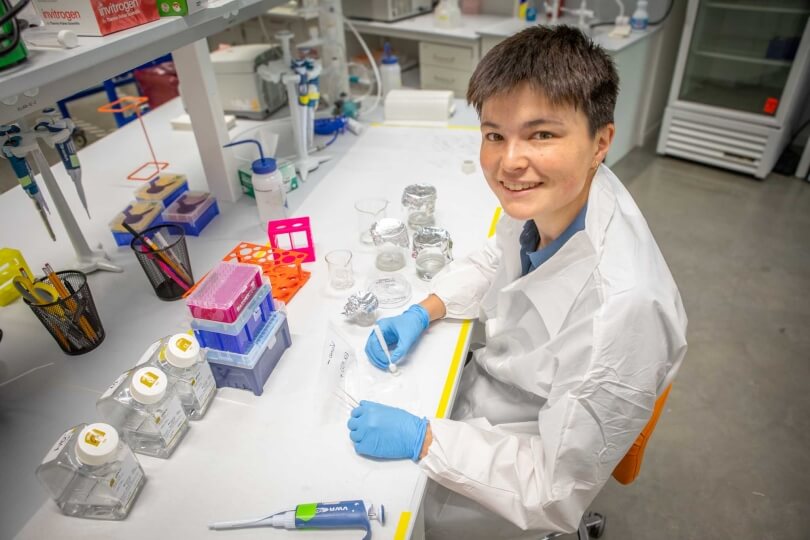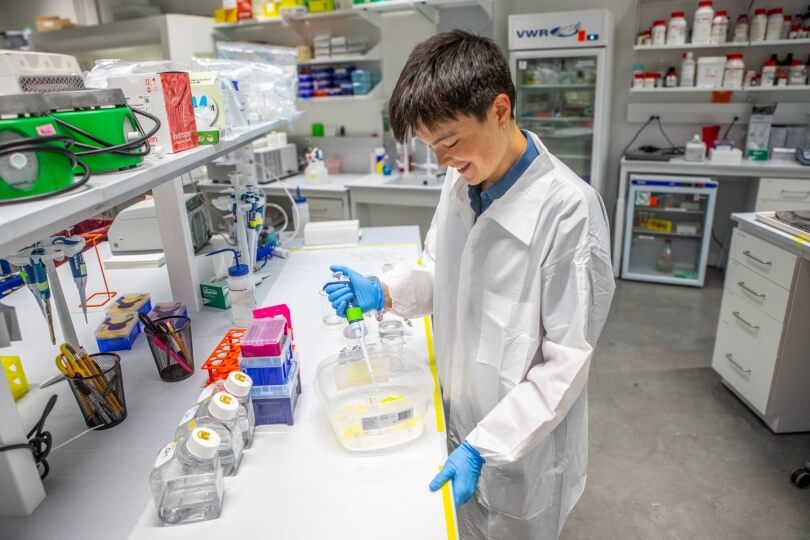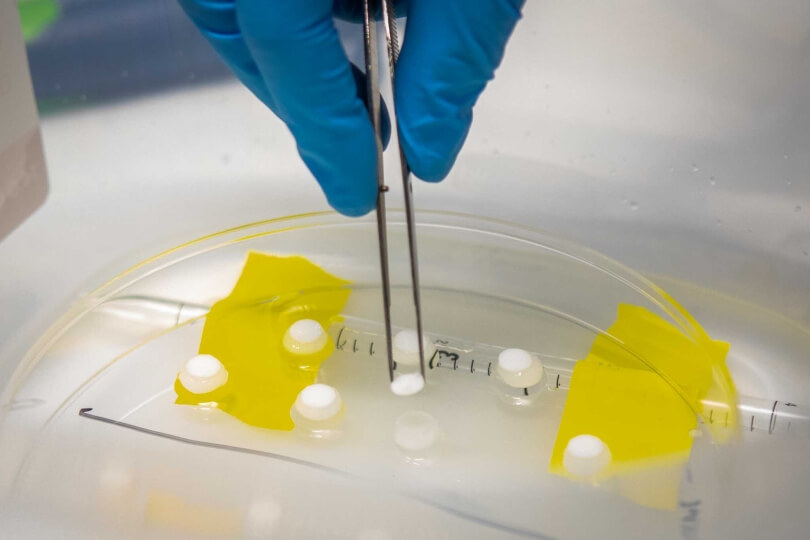KaiLan Mackey, S.B. '25, in bioengineering (Eliza Grinnell/SEAS)
Taking a gap year between high school and college, KaiLan Mackey enrolled in a course for wilderness first responders. Growing up in suburban Los Angeles, she loved hiking and being outdoors, and wanted the skills to help injured people she might happen to find on the trails.
“Even with that course, I realized there were scenarios where I still didn’t have the skills to help,” she said. “That’s when I really knew I wanted to pursue medicine.”
That course paved the way for many of the academic and extracurricular activities Mackey has undertaken as a bioengineering concentrator at the Harvard John A. Paulson School of Engineering and Applied Sciences (SEAS). She spent her sophomore year as a cancer therapeutics researcher in the Mooney Lab for Cell and Tissue Engineering, then moved on to the lab of Benjamin Freedman at Beth Israel Deaconess Medical Center in Boston. She’s also worked as an emergency medical technician (EMT) for CrimsonEMS, and volunteered as an operating room escort for Beth Israel.
“KaiLan has been fantastic to work with,” Freedman said. “One of the biggest things that we try to foster in our lab is a comfortable and collegial work environment, and she’s really the epitome of that.”
After graduating, senior KaiLan Mackey plans to work as an emergency medical technician in Cambridge while applying to medical school (Eliza Grinnell/SEAS)
After graduating later this month, she’ll continue work as an EMT in Cambridge while applying to medical school.
“I really like the idea of treating more holistically and seeing healing as a broader, continuous process,” she said. “I try to remind myself that the end-users of bioengineering are real people.”
Mackey already had some lab experience from a high school summer internship at UCLA, but arrived at Harvard unsure of the exact concentration she wanted to pursue. She knew she liked math, biology and the human body, and picked Harvard because of its academic approach.
“Harvard didn’t make you pick what you wanted to do when you arrived,” she said. “There was the option to explore and figure out what you liked through experience. Once I got here, I really enjoyed the lab work I did, my math classes and the computational work. Bioengineering was the perfect way to combine them.”
Mackey joined the lab of David Mooney, Robert Pinkas Family Professor of Bioengineering, in the fall of her sophomore year, where she worked on the lab’s landmark drug delivery hydrogel research. Her work focused on characterizing how the drugs diffused out of the gels. After a year, she switched to the Freedman Lab, working on similar adhesive gel patches for cancer treatments. She’s been with the Freedman Lab for the last two years, including through the summer Program for Research in Science and Engineering.
“What I really loved about my experience is the collaboration,” she said. “We’d have weekly meetings where people would explain what they’re working on. Here, it feels like everyone is available to help each other out, and this is in huge part thanks to the facilitation of Professor Mooney and Dr. Freedman.”
For her senior project, KaiLan Mackey developed a new hydrogel patch that improves postoperative cancer management (Eliza Grinnell/SEAS)
Three years of research came together in Mackey’s senior capstone project. She developed a new hydrogel patch that improves postoperative cancer management by releasing targeted chemotherapy drugs to prevent cancer recurrence, releasing antibiotics to prevent infection in the wound where the tumor was removed, and accelerating closure of the wound itself. Her project was selected for a Dean’s Award for Outstanding Engineering Projects.
“I’ve seen people close to me go through chemotherapy, and it worked,” she said. “They healed from the cancer, but I also saw the toll the whole process took on them, all the side effects and how devastating those were, even after the cancer itself was being cured. So I was interested in not only fighting the cancer itself, but treating the process more holistically and thinking about what the patient has to go through beyond the discrete disease itself. The thesis felt like a culmination of the various areas I’d explored before.”
Mackey’s time at Harvard has always been about collaboration. That includes her work in the Mooney and Freedman Labs, her roles as captain and treasurer of the Harvard club soccer team and backpacking leader for the Harvard First-Year Outdoor Program, or even just her evenings working on problem sets in Leverett House.
As she heads into the next phase of her life, that collaboration is what she’ll remember the most.
“I’ve really loved my experience at Harvard,” she said. “I didn’t know much about engineering coming into college, didn’t know what to expect, and one of my biggest worries was that it would be very cutthroat. But at the engineering school, that’s been the opposite of my experience. It’s been so nice to get to go through this process with our cohort together, see each other in different classes, help each other out and talk about what we’re working on. That’s been the most amazing part.”
Press Contact
Matt Goisman | mgoisman@g.harvard.edu


